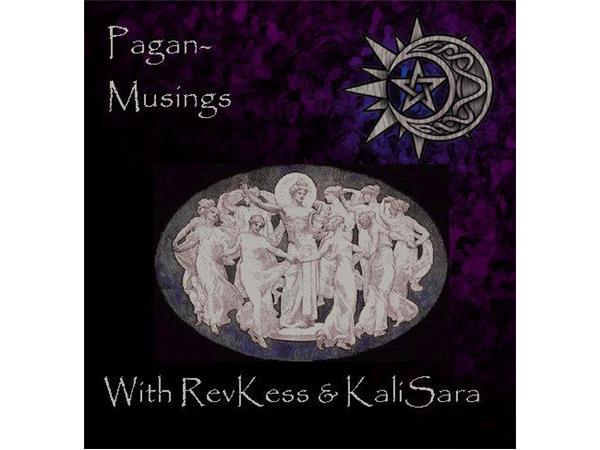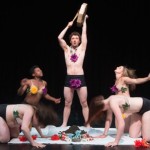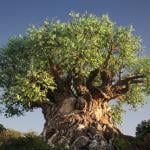All be he subject to mortalitie,
Yet is eterne in mutabilitie,
And by succession made perpetuall,
Transformed oft, and chaunged diverslie:
For him the Father of all formes they call;
Therefore needs mote he live, that living gives to all.
– Edmund Spenser, The Faerie Queene
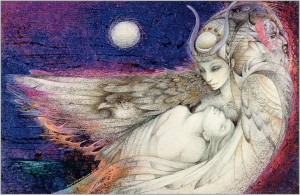
The Dying God as a Neo-Pagan Meta-Myth
Neo-Pagans love myth. We read mythology, incorporate it into our rituals, and adapt it to meet our personal and collective needs. For the most part, we are borrowing myths from other cultures and other historical periods. Some of the myths that Neo-Pagans commonly draw upon include the Summerian/Babylonian myth of the descent of Inanna/Ishtar into the underworld, the Egyptian myth of the murder of Osiris by Set and his resuscitation by Isis, and the Arthurian myths of the quest for the Holy Grail. But we Neo-Pagans have our own myths too, like the myth of the Burning Times, the myth of ancient pagan survivals, the myth of matriarchal prehistory, and the myth of the ecological consciousness of ancient pagans (a version of the noble savage myth). Like most myths, these contemporary myths have a kernel of historical truth, but they are largely fictions. Their importance lies, not in their historical accuracy, but in their contemporary significance. They never happened, but they in a sense are always happening.
If there is a central organizing myth for Neo-Paganism, I think it would be the myth of the Dying and Rising God. The Dying God myth underlies the Neo-Pagan Wheel of the Year and the semi-seasonal rituals that are the most visible expression of the Neo-Pagan mythos. The story of this myth is a curious example of how a person’s scholarly or artistic ideas can take on a life of their own.
The Dying and Rising God myth originates with the turn of the century classicist, James Frazer, the author of The Golden Bough. The Golden Bough was published in various editions between 1890 and 1922. The third edition was 12-volumes. Later, a single-volume abridged edition was published for pubic consumption. Frazer’s Golden Bough posits that ancient peoples believed in a dying and reviving god, representing the animating spirit of vegetation, incarnated in human form as sacral kings, who were sacrificed after a term or when their power of mind or body failed, in a cyclical renewal of life. Frazer argued that many pagan gods — especially Osiris, Adonis, Tammuz, and Balder — were types of the dying and reviving god who died and rose again with the changing of the seasons and were responsible for growth of the crops on which humans depended. While names and details differed, Frazer believed that, in substance, they were the same myth, the myth of the Dying and Rising God.
Many scholars have criticized Frazer’s theory, arguing that Frazer (and those who followed him) glossed over important differences in the details of these myths in order to find support for the archetypal Dying God. The most thorough analysis of the Dying God myths I have read was by Tryggve Mettinger in Riddle of the Resurrection: “Dying and Rising God” in the Ancient Near East. For the most part, Mettinger concludes that no pagan god really fit Frazer’s mold. The Canaanite Ba’al is the one that comes closest, although the Ugaritic Ba’al cycle was not actually discovered until after Frazer published The Golden Bough. Unfortunately, Mettinger does not discuss goddesses in his study. Inanna/Ishtar is arguably a good example of a Dying and Rising Goddess.
But regardless of whether ancient pagan gods or goddesses really fit the Frazer’s archetype, the archetype has had a profound influence on the modern mind. In his thesis, “Plucking the Golden Bough: James Frazer’s Metamyth in Modern Neopaganism” (1999), Robert Nolan Puckett argues that Frazer’s theory of myth has now become a myth itself, or rather, a “metamyth”, which has become permanently ingrained in the Western consciousness. In The Literary Impact of the Golden Bough, John Vickery traces the influence of Frazer on modern authors including D.H. Lawrence. T.S. Eliot, W.B. Yeats, and James Joyce, many of whom had an indirect influence on Neo-Paganism, as Ronald Hutton illustrates in Triumph of the Moon. Frazer was also a significant influence on Jane Ellen Harrison and Robert Graves, both of whom were in their turn important influences on contemporary Neo-Paganism. In addition, Margaret Murray’s interpretation of witchcraft was rooted in Frazer’s theory. Murray writes, in The God of the Witches, that the fundamental difference between Christian and pagan religion “is that the Christian believes that God died once and for all whereas the more primitive beliefs is that the god is perpetually incarnate on earth and may therefore be put to death over and over again.”
The extent of the influence of James Frazer on Neo-Paganism can hardly be overstated. This is ironic, because Frazer himself was an atheist. One of his purposes in The Golden Bough was to discredit Christianity by suggesting that the figure of Christ had been an outgrowth of the pagan belief in a dying and reviving vegetation spirit, represented in human form by sacrificial kings. In the second edition of The Golden Bough, Frazer suggests that the Christian story of the Crucifixion was derived from the sacrifice of these god-kings. (However, this was not included the 1922 abridged version, which was the edition most read by the public.) Frazer’s purpose was neither to legitimate ancient pagan practices, nor to affirm the superiority of Christianity by arguing the pagan precedents were devilish imitations or a “type” of Christ looking forward to the revelation of the divine reality. Frazer wanted rather to consign the whole field of religion, Christian and pagan, to the rubbish heap of history.
The Dying God and the Neo-Pagan Wheel of the Year
In the minds of many Neo-Pagans though, while Frazer succeeded in reducing Christianity to just another form of the cult of the Dying and Reviving God, he failed in his goal to undermine the validity of all religion. As Puckett describes, the ironic effect of The Golden Bough was rather the creation of a new Neo-Pagan religion, which was antagonistic to Frazer’s modernist agenda. Ronald Hutton states that Frazer’s thesis “arguably did succeed in doing further damage to the status of Christianity, but it fostered not so much an enhanced respect for rationalism and progress as a [romantic] delight in the primitive and the unreasonable.” Hutton explains, “[B]y placing Christ in a context of dying and resurrecting pagan deities, Frazer had hoped to discredit the whole package of religious ideas. Instead, as some of the literary use of the Bough indicates, he actually gave some solace to those disillusioned with traditional religion, by allowing them to conflate the figure of Jesus with the natural world.”
Frazer inspired an entire generation of scholars, including the Cambridge Myth and Ritual school, which included Jane Ellen Harrison. According to Sabina Magliocco, the Cambridge Ritualists “reconstructed a set of rites synchronized to the seasonal cycle of planting and harvesting in which the king was killed, descended to the underworld, fought against the force of darkness, then resurrected to celebrate a divine marriage with the temple priestess/sacred concubine”. For example,in his book, Thespis, Theodore Gaster interpreted the motif of the dying and resurrected god as underlying all seasonal rituals, drawing heavily on the Canaanite myth of Ba’al. Gaster outlined four stages in the life-cycle of the dying god, which corresponded to four universal seasonal celebrations:
1. Mortification: a state of suspended animation at the end of the year, when one lease on life has drawn to a close and the next is not yet assured, which takes the form of lents, fasts, or other austerities
2. Purgation: a ridding of evil influences which might impair prosperity in the coming year and threaten the renewal of vitality
3. Invigoration: a galvanizing of the moribund condition to procure a new lease on life, which commonly takes the form of a ritual combat between life and death, summer and winter, or the old and new years
4. Jubilation: a sense of relief when the new year has began and the continuance of life is assured
Similarly, Gilbert Murray theorized that the ritual form underlying Greek tragedy followed a similar pattern:
1. Agon: a contest of the year-daimon against his enemy, light against darkness, or summer against winter
2. Pathos: a ritual or sacrificial death of year-daemon, followed by an announcement of the same by a messenger
3. Threnos: a lamentation of the death of the year-daimon
4. Theophany or Peripeteia: a resurrection and epiphany of the year-daimon, which is accompanied by a change from grief to joy
This became the foundation of the modern Neo-Pagan Wheel of the Year with its eight-fold division of the ritual year, the high points of which include:
The rebirth of the Sun God at the winter solstice
The celebration of the union of Goddess and God in the spring
The battle of the Oak King (summer) and the Holly King (winter) for the love of the Goddess
The sacrifice of the God of the harvest in the autumn and the descent of the Goddess into the underworld to learn the mastery of death
The Goddess as Slayer: Robert Graves’ Contribution to the Dying God Myth
Frazer’s Dying God was to have a profound influence on the “grandfather” of contemporary Neo-Paganism, Robert Graves, the author of The White Goddess. According to John Michael Greer,
“The poetic and historical aspects of the [Neo-Pagan] Goddess were brought together in their definitive form by the English poet Robert Graves, whose The White Goddess (1948) was the most influential source of Goddess imagery and ideology for the modern Pagan revival. […] While a great deal has been written on the Goddess since Graves’ time, very little of it has departed significantly from the themes and imagery he received from previous poets and scholars and passed on to the current Pagan movement. It thus seems probable that the basic images and attributes of the Goddess have crystallized for the foreseeable future.”
Graves’ influence in Neo-Paganism can be illustrated by a 1969 interview with The Paris Review, in which Graves observed that “various White Goddess religions started in New York State and California. I’m today’s hero of the love-and-flowers cult out in the Screwy State, so they tell me”. This may not have been mere hyperbole or self-aggrandizement. Elizabeth Gould-Davis, the author of The First Sex, corresponded with Graves for several years, and in 1973, she told him:
“I suppose you know that you are the God of the new Movement here, the newest of the new women’s movements, and you are the only male creature who is admitted to godhead in the movement. It has all sorts of names because it is not yet co-ordinated. Small groups from California to New York have formed to defy Christianity and all organized religion, to worship the female principle, and to bring back the Great Goddess.”
Graves himself was deeply indebted to Frazer’s meta-myth. According to Barbara Davy, while Robert Graves was not himself Neo-Pagan, “he gave Paganism a lasting mythic vision of the relationship between the Goddess and her consort.”
“Graves used Frazer as a source for his mythic vision of the Goddess and her consort. He split Frazer’s dying and resurrecting god into the gods of the waxing and waning year, probably from Welsh stories of annual fights, such as Gwyn ap Nudd and Gwythr in the Mabinogion. Graves’ understanding of the seasonal relationship between the Goddess and the God became integrated into the Wiccan festival cycle. He constructed a poetic myth that contributed to making Goddess religion explicit in the form of Wicca.”
Grevel Lindop also cites Frazer as in important influence on Graves. In his introduction to the 1997 edition of The White Goddess, Lindop states:
“In a sense, Graves’s work rests on a brilliantly simple transformation of Frazer’s theory. The Golden Bough had demonstrated that a wide range of primitive religions centered on a divine king, a man who represented a dying god of vegetative fertility and who either killed his predecessor, reigning until killed in his turn, or else was sacrificed at the end of a year’s kingship. Graves’s contribution was to supply the missing female part in this drama: to suggest that originally the god-king was important not for his own sake, but because he married the goddess-queen; and whilst kings might come and go, the queen or goddess endured.” (emphasis added)
Graves genius was to bring together Frazer’s Dying God with a Triple Goddess in a single myth in which the Dying God is sacrificed to or even by the Goddess. The Neo-Pagan Triple Goddess was Graves’ creation (although he was likely inspired by a text by the late Roman commentator Servius). Jane Ellen Harrison, a contemporary of Frazer’s, had described a Goddess with two aspects, Maid and Mother, Kore and Demeter. Harrison’s description was novel in that she them as two aspects of one being, and compared them to the Father and Son of the Christian Trinity. But Harrison did not take the next step to identify a third aspect of the Goddess. This is curious to me, since the dual nature of Persephone and the presence of Hecate in the Eleusis myth both suggest a third aspect of the Goddess, as does the analogy to the Christian Trinity. But in any case, it was left to Robert Graves to describe the third aspect of the Goddess, the Goddess as Slayer.
The focus of Graves’ treatment of the Triple Goddess in The White Goddess is on her role as the lover and slayer of her consort. In his King Jesus, published four years before The White Goddess, Graves stated that sacred king was sacrificed to the Goddess: “In every case the Sacred King was regarded as a sacrifice made on behalf of the tribe to its Goddess Mother.” In The White Goddess, Graves describes the goddess as imprisoning the Sun-king in the “extreme north”, while simultaneously observing that “the Sun-king, is killed at the summer-solstice when the Sun attains his most northerly station.” Elsewhere, Graves states that the goddess “presides over” the killing of the oak-king at midsummer, and that she sends the sacred king his summons to death. Most tellingly, Graves describes the god as the son, lover, and victim of the goddess:
“The Triple Muse […] or Ceridwen, or whatever else on may chose to call her, is originally the Great Goddess in her poetic and incantatory character. She has a son who is also her lover and her victim, the Star-son, or Demon of the Waxing Year. He alternates in her favor with his tanist Python, the Serpent of Wisdom, the Demon of the Waning year, his darker self.”
“… the Sacred King as the Moon-goddess’s divine victim; holding that every Muse-poet must, in a sense, die for the Goddess whom he adores, just as the King died.”
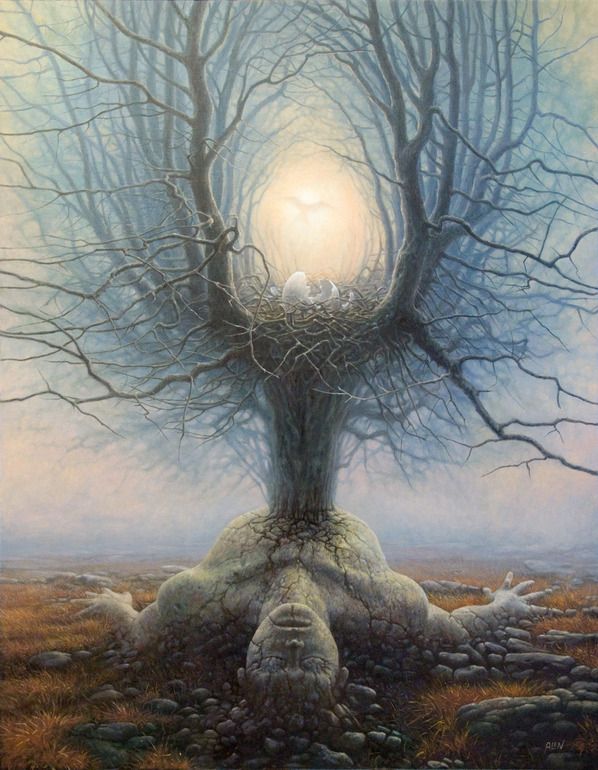
Easter and the Dying God
So what about Easter? I don’t it is correct or appropriate to reduce the Christian Jesus to a type of the Neo-Pagan Dying God. But the Neo-Pagan myth of the Dying God does draw from the the Christian myth, just as it draws from many pagan myths. While the Christian Easter season celebrates the death and resurrection of Jesus in relatively short space of time, the Neo-Pagan liturgical year separates these events, with the sacrifice occurring in the fall and the “resurrection” occurring in the spring.
At this time of the year, I can’t really connect with the themes of death and sacrifice, which I associate with autumn. But rebirth is something very much on my mind at this time of year, as I notice the the buds appearing on the trees, the birds singing again in the morning, and the wild geese returning north. For this Pagan, Easter is celebration of the parousia, the manifestation of Indestructible Life which shows forth in the warming sun and the rising green grass, as well as in the lifting of my spirit from the shroud of internal winter. So I feel no cognitive dissonance in celebrating the Easter holiday with my Christian wife this year. The point for me isn’t that Jesus was a Dying God, but that the Dying God lives in me. Leon Bloy wrote: “Whether life is in men, in animals, or in plants, it is always Life, and when the incomprehensible point that is called death comes, it is always Jesus who departs, alike from a tree and from a human being.” At this time of the year, I would say rather:
Whether life is in humans, in animals, or in plants, it is always Life, and when the incomprehensible point that is called rebirth comes, it is always Jesus who returns, alike to a tree and to a human being.




